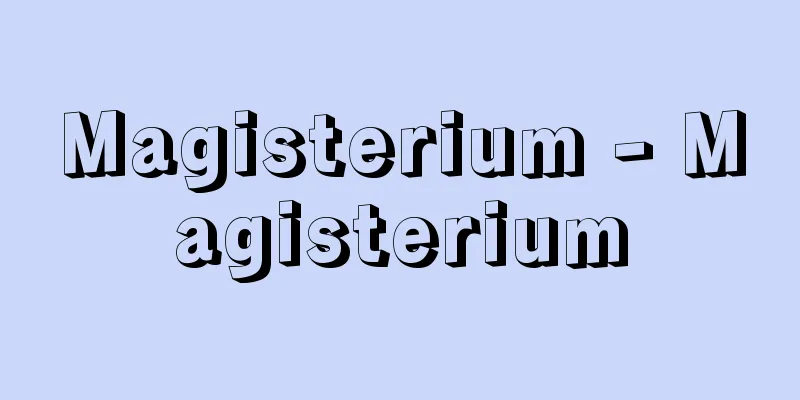Vulcanization - Karyu

|
This is the process of mixing a crosslinking agent with a plastic rubber raw material (chain polymer) to cause a crosslinking reaction between molecules (vulcanization), creating a three-dimensional network polymer and producing a rubber-like material with no fluidity. Historically, rubber was produced by adding sulfur to natural rubber to cause a crosslinking reaction, hence the term vulcanization, and is used synonymously with crosslinking. Vulcanization can be broadly divided into sulfur vulcanization and non-sulfur vulcanization. Natural rubber and many synthetic rubbers (SBR, NBR, IR, BR, etc.) use sulfur as a vulcanizing agent (crosslinking agent), while chloroprene-based synthetic rubber uses metal oxides such as magnesium (non-sulfur type). Other vulcanizing agents used include selenium, tellurium, and inorganic and organic sulfur compounds. Generally, rubber vulcanization is carried out by heating (110-170 °C) compound rubber (rubber raw materials, vulcanizing agent, reinforcing agent, vulcanization accelerator, anti-aging agent, etc.) with steam or boiling water and applying pressure. The resulting product is called vulcanized rubber. The crosslinking reaction of rubber occurs when a chemical reaction occurs between the double bonds in the rubber molecules and sulfur (sulfur before the reaction is constructed from cyclic octamers), and the sulfur molecules form crosslinking points. At these crosslinking points, multiple sulfur molecules (1-8) are linked together. Most common sulfur crosslinks have one or two sulfur molecules. Vulcanization accelerators have the effect of lowering the vulcanization temperature and shortening the time, and are useful for improving the quality of vulcanized rubber. Representative accelerators include guanidines, aldehydes, amines, thiazoles, and thiurams, and are used together with accelerator assistants such as stearic acid and zinc oxide. Reinforcing agents such as carbon black are added to improve the material properties of rubber. Generally, 2 to 3 parts of sulfur are added to 100 parts of rubber to produce normal vulcanized rubber. In products where it is unacceptable for unreacted vulcanizing agents (including compounding agents) to precipitate on the surface of the product during vulcanization (this precipitate forms a flower-like pattern known as blooming), soft vulcanized rubber is produced with an added amount of sulfur of 0.5 or less (low sulfur vulcanization). Examples of such products include transparent rubber, heat-resistant rubber, and rubber for electrical wire coating. Rubber that contains around 30% sulfur is called hard rubber (ebonite). Vulcanized rubber produced using the minimum amount of vulcanizing agents and compounding agents required for vulcanization is called a pure rubber compound, and is contrasted with vulcanized rubber that contains carbon black. Other methods for creating rubber-like materials without using any vulcanizing agents (crosslinking agents) include radiation crosslinking (vulcanization), in which polymer chains are crosslinked using radiation, and physical vulcanization (physical crosslinking), which utilizes the cohesive force of the hard molecular chains in segmented urethane, which is composed of hard and soft molecular chains. Source: Morikita Publishing "Chemical Dictionary (2nd Edition)" Information about the Chemical Dictionary 2nd Edition |
|
可塑性のあるゴムの原料(鎖状高分子)に架橋剤をまぜて,分子間に架橋反応を起こさせ(加硫),三次元的な網目状高分子をつくり,流動性をなくしたゴム状物質を製造する操作をいう.歴史的には天然ゴムに硫黄を添加して架橋反応を行い,ゴムを製造したことから加硫といい,架橋と同じ意味で用いられる.加硫は,硫黄加硫と非(無)硫黄加硫に大別できる.天然ゴムや多くの合成ゴム(SBR,NBR,IR,BRなど)では,加硫剤(架橋剤)として硫黄が用いられ,クロロプレン系合成ゴムでは,マグネシウムなどの金属酸化物(非硫黄系)が使用される.このほかにも加硫剤として,セレン,テルル,無機,有機の硫黄化合物などが使用されている.ゴムの加硫は一般には,配合ゴム(ゴムの原料,加硫剤,補強剤,加硫促進剤,老化防止剤など)を蒸気や熱湯により加熱(110~170 ℃),加圧して行い,生成したものを加硫ゴムとよぶ.ゴムの架橋反応は,ゴム分子中に含まれる二重結合と硫黄(反応前の硫黄は環状八量体から構築されている)との間で化学反応が起こり,硫黄分子が架橋点を構築する.この架橋点では,硫黄分子は複数個(1~8個)連なっている.一般の硫黄架橋では,硫黄が1~2個のものが多い.加硫促進剤は加硫温度の低下,時間の短縮をもたらす効果があり,加硫ゴムの品質向上に役立つ.代表的促進剤として,グアニジン類,アルデヒド類,アミン類,チアゾール類,チウラム類があり,ステアリン酸や亜鉛華などの促進助剤と一緒に用いられる.ゴムの材料的性質を改良するために,カーボンブラックなどの補強剤が加えられる.一般に硫黄の添加量は,ゴム100に対し2~3程度加えて通常の加硫ゴムが製造されている.加硫ゴム製造時に,製品の表面に未反応の加硫剤(配合剤を含む)が析出する(花模様状に析出することによりブルーミングとよばれている)のを嫌う製品では,硫黄添加量を0.5以下(低硫黄加硫)にして軟質加硫ゴムを製造している.このような製品として,透明ゴム,耐熱ゴム,電線被覆用ゴムなどがある.硫黄を30% 前後含んだものを硬質ゴム(エボナイト)とよぶ.加硫するのに最低限必要な加硫剤,配合剤を用いて製造した加硫ゴムを純ゴム配合とよび,カーボンブラックを配合した加硫ゴムと対比される.このほかに,加硫剤(架橋剤)を一切使用しないで,ゴム状物質を作成する方法として,放射線により高分子鎖を架橋する放射線架橋(加硫)や,硬い分子鎖と軟らかい分子鎖から構成されているセグメントウレタンにおける硬い分子鎖の凝集力を利用した物理加硫(物理架橋)がある. 出典 森北出版「化学辞典(第2版)」化学辞典 第2版について 情報 |
>>: Kariyasu (Kariyasu) - Kariyasu
Recommend
Kantan (Oecanthus longicauda)
Known as the queen of chirping insects, this insec...
Battery - denchi (English spelling) battery
It can be defined as a power generating device th...
Pune
An academic city with a pleasant climate in the We...
Hattori Yukimasa - Hattori seems to be
Historian. Born in Shimane Prefecture on Septembe...
Hokkaido Takushoku Bank [Stock] - Hokkaido Takushoku Bank
The first city bank to go bankrupt. Established as...
Cabriolet - Cabriolet
...Originally, carriage rental was a business of ...
Austrobaileya - Austrobaileya
…(3) The xylem of the vascular bundles contains v...
Ancient Records of Great Japan - Dainihonkokiroku
This is a series of historical documents on Japan...
Fatwa (English spelling)〈Arabic〉fatwā
Opinions and judgments issued by Islamic jurists f...
Spiral spring - Uzumaki spring
A spring made of metal strips or wire wound in a s...
Karakorum (English spelling) Kharakhorum
The capital of the Mongol Empire before the estab...
Priest - Shisai (English spelling)
A mediator between God and humans in a strict reli...
Life type
A classification of the life style of an organism....
Cottage system
…Despite the “universal phenomenon of delinquency...
Five Mountains - Gogaku
A collective term for the five great mountains se...









